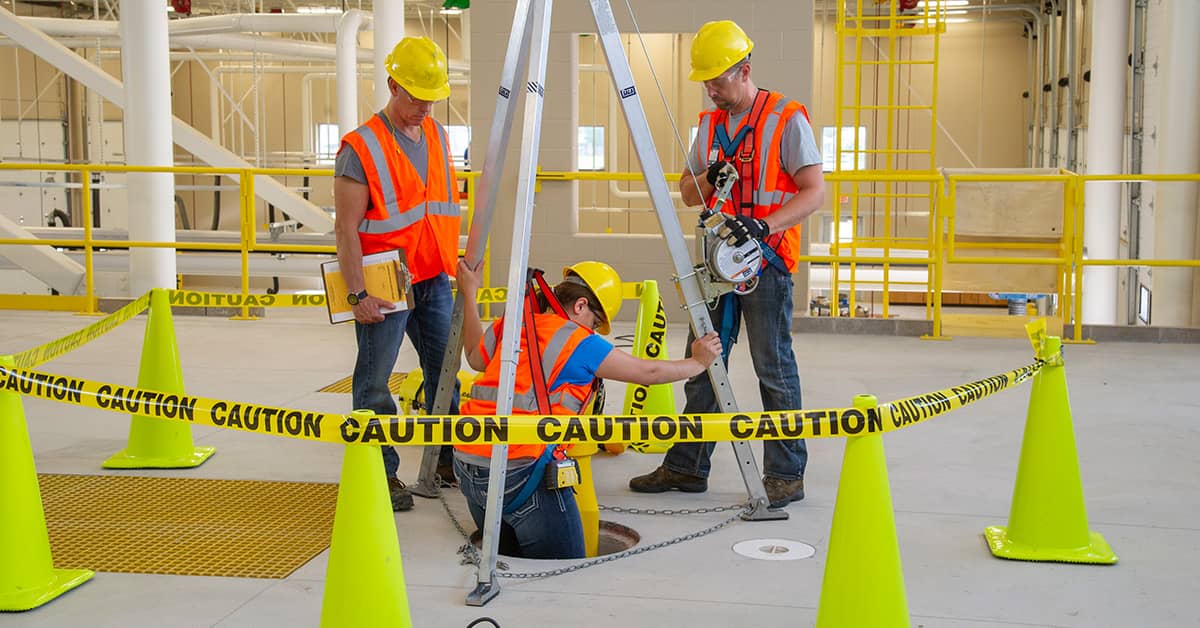Confined space hazards can be a matter of life or death
Date Posted: 04/01/2024

A truck washing company was fined nearly $172,000 for two willful and 24 serious violations following an investigation related to the death of one employee and the hospitalization of two others. OSHA inspectors determined the company failed to protect workers from hydrogen sulfide gas as they entered over-the-road tanker trailers to clean them out.
Inspectors found multiple violations of OSHA’s confined space regulations. The company did not:
- Evaluate the workplace to determine if any spaces were permit-required confined spaces;
- Develop a confined space program or procedures necessary for safe permit space entry operations;
- Provide employees with atmospheric monitoring and testing equipment, ventilating equipment, communication equipment, and rescue and emergency equipment;
- Evaluate the hazards of permit spaces before employees entered;
- Provide an attendant outside the permit space during entry operations;
- Designate employees who were to have active roles in entry operations, including attendants and entry supervisors;
- Develop procedures for summoning rescue and emergency services;
- Develop confined space entry permits; or
- Provide employee training.
What’s considered a confined space?
Many workplaces contain areas that are considered “confined spaces” because while they’re not necessarily designed for people, they are large enough for workers to enter and perform certain jobs. A confined space also has limited or restricted means for entry or exit and is not designed for continuous occupancy. Examples include:
- Tanks
- Vessels
- Silos
- Storage bins
- Pits
- Manholes
- Tunnels
- Ductwork
- Pipelines
- Hoppers
OSHA uses the term “permit-required confined space” (permit space) to describe a confined space that has one or more of the following characteristics:
- Contains or has the potential to contain a hazardous atmosphere;
- Contains material that has the potential to engulf an entrant;
- Has walls that converge inward or floors that slope downward and taper into a smaller area which could trap or asphyxiate an entrant; or
- Contains any other recognized safety or health hazard, such as unguarded machinery, exposed live wires, or heat stress.
What does OSHA require?
The regulation has numerous requirements to ensure worker safety. Employers must:
- Evaluate the workplace to determine if any spaces are permit-required confined spaces.
- Inform employees of the location and danger of permit spaces by signs or other effective means.
- Either develop and implement a written permit space program or prevent employees from entering permit spaces.
- Evaluate all permit spaces prior to entry.
- Develop a written permit to be completed by the entry supervisor prior to entry.
- Allow entrants or their representative to observe permit space testing.
- Train employees on their duties as entrants, attendants, and/or entry supervisors.
- Only allow entry into permit spaces with a signed entry permit.
- Provide proper personal protective equipment to all entrants.
- Ensure adequate rescue personnel are available for all entries.
- Provide hospitals or treatment facilities with any Safety Data Sheets (SDSs) or other information in a permit space hazard exposure situation that may aid in treatment of rescued employees.
- Ensure unauthorized employees do not approach or enter a permit space.
- Ensure acceptable conditions remain throughout the entry. If entry conditions become unacceptable, entrants must leave the space.
- Retain canceled permits for a year to facilitate a review of the permit space program.
- Coordinate with contractors who may be involved or impacted by permit space entries.
How Safety Management Suite Can Help
Confined spaces are found in many workplaces and the regulation contains numerous requirements. To quickly get up to speed on a new subject, check out the Topics area of the J. J. Keller® SAFETY MANAGEMENT SUITE. You’ll find a Confined Spaces topic covering employer requirements, as well as resources like training and written plan templates.
E-mail Newsletter
Sign up to receive the weekly EHS Insider email newsletter for safety articles, news headlines, regulatory alerts, industry events, webcasts, and more.